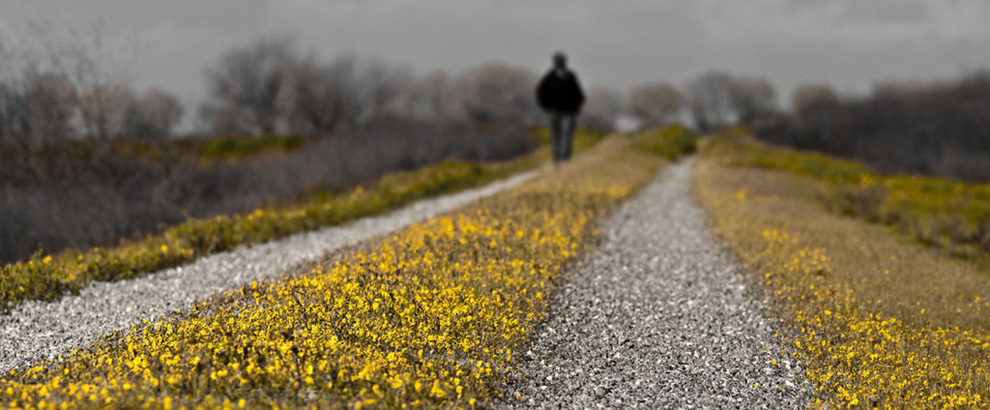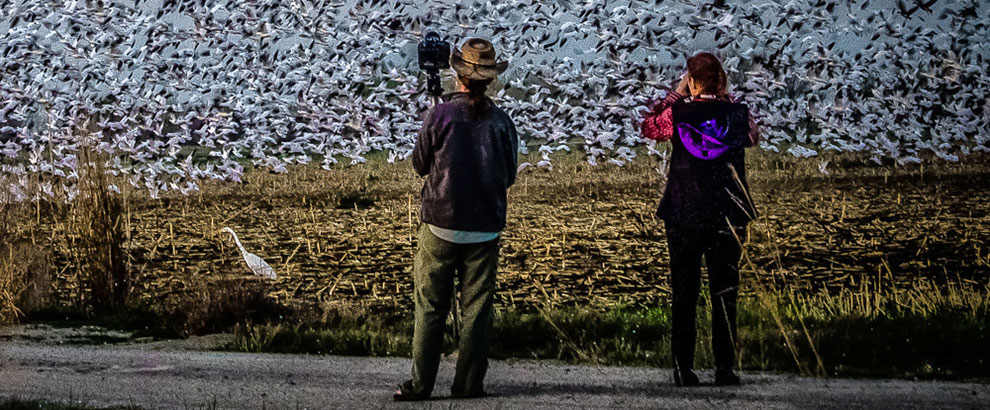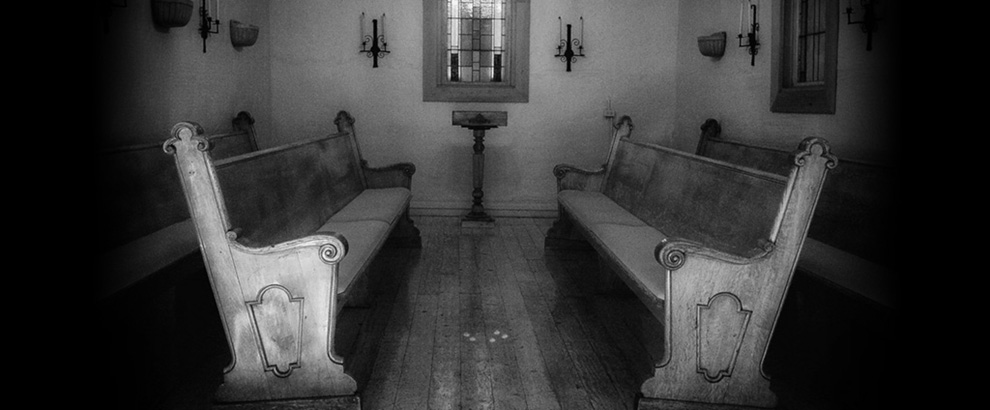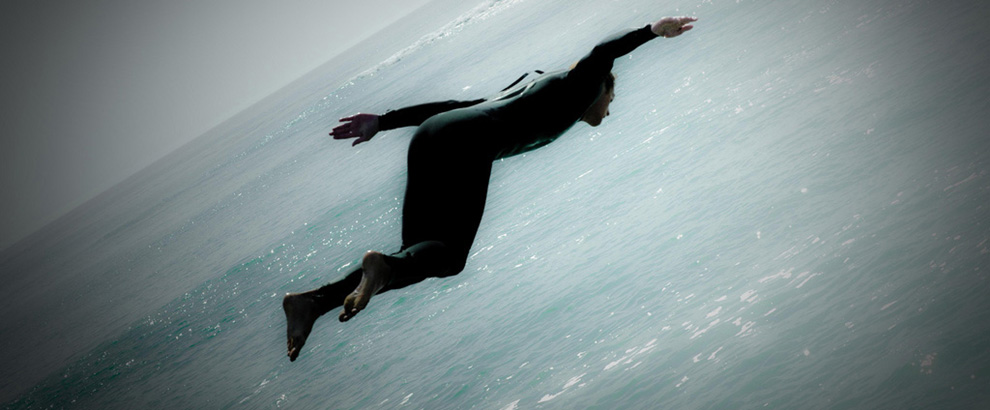
In what is surely an indication of just how powerful and provocative William Butler Yeats’s 1919 poem, “The Second Coming” is, a critic writing in “The Paris Review” five years ago suggested it “may well be the most thoroughly pillaged piece of literature in English.” (Personally, I’m inclined to think it may be a dead-heat between it and Robert Frost’s “The Road Less Traveled.”)
Images and phrases from the poem (“widening gyre,” “falcon/falconer,” “things fall apart,” “the centre cannot hold,” “blood-dimmed tide,” “rough beast,” “passionate intensity,” “slouching toward…”) abound in popular culture, politics, literature and other arts (even comic books, heavy metal, and as a true mark of distinction, the music of Joni Mitchell).
That’s no minor accomplishment for a poem (a poem!) of a mere 22 lines, more than a century after its publication in the calamitous wake of the First World War.
Today, of course, we appear to be thrashing around in quicksand borne of our era’s own calamities of a global pandemic, climate change, nations and lone gunmen armed to the teeth, terrorism, radical income disparity, and the seemingly intentional chaos loosed from Washington D.C. upon a world that traditionally looked to it as a source of stability.
Some 80 years later, where are we? The decades pass, peace fleeting at best, freedom rising and falling, as do populist waves and the strongmen who ride them and promise deliverance.
Probably the poem’s most widely quoted line—“Things fall part; the centre cannot hold”—serves as a virtual minefield of references to cultural and political decline, available to finger-wagging prosecutors from across the ideological spectrum.
The image seems to provide equal opportunity fodder for the “Things are going to hell in a hand basket” scold that lurks and seeks occasional expression inside virtually every human being at one time or other.
Will some sort of “Second Coming” of the messiah alluded to in the New Testament perhaps save us, as various Christian sects have been predicting to greater or lesser degrees for centuries and wondering out loud about every time a dark historic moment rears its head?
That’s not the kind of Second Coming Yeats is alluding to. Not by a long shot.
***

***
Here’s the poem in full:
Turning and turning in the widening gyre
The falcon cannot hear the falconer;
Things fall apart; the centre cannot hold;
Mere anarchy is loosed upon the world,
The blood-dimmed tide is loosed, and everywhere
The ceremony of innocence is drowned;
The best lack all conviction, while the worst
Are full of passionate intensity.
Surely some revelation is at hand;
Surely the Second Coming is at hand.
The Second Coming! Hardly are those words out
When a vast image out of Spiritus Mundi
Troubles my sight: a waste of desert sand;
A shape with lion body and the head of a man,
A gaze blank and pitiless as the sun,
Is moving its slow thighs, while all about it
Wind shadows of the indignant desert birds.
The darkness drops again but now I know
That twenty centuries of stony sleep
Were vexed to nightmare by a rocking cradle,
And what rough beast, its hour come round at last,
Slouches towards Bethlehem to be born?
***
There’s no doubting the raw power of those words and phrases and the pictures they form in one’s mind. Anarchy, blood, revelation, drowning, troubled sight, pitiless gaze, desert waste, a lion-headed man, indignant birds, darkness, stony sleep, nightmare, a rocking cradle and a rough beast finally come round.
And as a concluding gut punch, this “rough beast” is “slouching” toward where the reputed messiah of Christianity and savior of the world was born.
Yikes.
Dread is thick in the air here, an out-loud wondering whether humanity can be redeemed or is simply hurtling blindly toward self-destruction.

Yeats was from Ireland, a fact which at least partly explains the troubling questions he poses about the trajectory of our world. Protestant only by virtue of his grandfather being a minister, he was primarily a mystic who dabbled in the occult and did not appear to subscribe to conventional religious beliefs or practices.
The “Second Coming” to which the title of this poem refers is not about a return of Christ, nor does the dark tone suggest an anti-Christ figure that many Christians believe will precede Jesus’s final triumphant return. Instead, this coming is of the secular “beast” living within the human heart and riding in amidst the “darkness” and “stony sleep” vexing the “cradle” of civilization that made such a mess of things in Yeats’s lifetime.
Fresh off the “war to end all wars” in 1918, Yeats then lived long enough before his death in 1939 to see Hitler’s long rise to power and his annexation of Austria and the Czech Republic in the run-up to World War II. That history only proved how portentous “The Second Coming” had been 20 years earlier, with its images of disconnection, disarray and deafness, the falcon unable to hear even its falconer while a lion’s body with the head of a man rampaged unchecked through the world.
Some 80 years later, where are we? The decades pass, peace fleeting at best, freedom rising and falling, as do populist waves and the strongmen who ride them and promise deliverance.
“History does not repeat itself but it often rhymes,” goes the saying widely misattributed to Mark Twain, true source unknown.
Crises of monumental proportions abound as we awake to each day, carefully tucking our uncertainties and looming questions into whatever slots are available as we go seeking the comforting, predictable pleasures and pastimes of our daily lives.
Today, those pleasures remain within the constricted scope set by the current King of Crises: the Covid-19 pandemic.

Even as some natives grow restless in registering their frustration at the restrictions in place nearly worldwide, the far more astonishing thing is how much buy-in there has been among vast populations, how respectfully people have treated the guidelines and adjusted their behavior (thus far, anyway) amidst nearly unprecedented change in their activity and threats to their economic well-being.
So, is “some revelation (surely) at hand,” as Yeats teased a century ago? Truly, the question resounds in every era.
We can only hope—and work toward, as, let us not forget, billions of well-intentioned people are doing every day—for a revelation that does not involve a lion-man with “a gaze blank and pitiless as the sun.”
In the end, the most important revelation coming out of this turbulent era may be that regular men and women, nothing leonine about them, compassionate rather than pitiless, have seen fit to make huge sacrifices in pursuit of both their personal and the common long-term good, despite the radical dislocation those sacrifices have involved.
And perhaps, just perhaps, the collective power they have shown to “flatten the curve” of the current pandemic will reveal itself to them as more potent than they assumed, more able to let them stand up and clearly assess and respond to the other crises that face them, and the rough beasts who try to use those crises to their advantage in every place and time.
***
Slouching with Joni…
***
Check out this blog’s public page on Facebook for 1-minute snippets of wisdom and other musings from the world’s great thinkers and artists, accompanied by lovely photography.
http://www.facebook.com/TraversingBlog
Deep appreciation to the photographers! Unless otherwise stated, some rights reserved under Creative Commons licensing.
Elizabeth Haslam, whose photos (except for the books) grace the rotating banner at top of page.
https://www.flickr.com/photos/lizhaslam/
Library books photo by Larry Rose, all rights reserved, contact: larry@rosefoto.com
Falcon by Scot Nelson https://www.flickr.com/photos/scotnelson/
Gyre by JR Korpa https://unsplash.com/@korpa
Woman underwater by Christopher Campbell, Gold Coast, Australia https://unsplash.com/@chrisjoelcampbell
Masked girl by Matthew Roth, Hood River, Oregon https://www.flickr.com/photos/matthewalmonroth/















100 years ago in 1920, there was the Galveston Texas Plague.
It was thought that the origin of the Black Plague was started when a Mongol army started catapulting its dying soldiers into Caffa (Crimea). This was the first known instance of Germ Warfare. And of course today Trump believes that China is doing this to the USA. (Actually, Trump, who has a bookshelf the size of a microwave oven, and gets this idea from a crony at Fox, probably has no knowledge of this event.)
And 100 years ago, 1920, the US economy grew by 42%, 9 years later, the Great Depression. So we are ahead of the game here.
I am reminded of one of my favorite poems by Oliver Wendell Homes, “The Deacon’s Masterpiece”. As you probably know it is about the sudden collapse of Calvinism. I liked the poem at first just because of the use of the word “thill,” my last name. But the 100 year theme, the sudden collapse of something that was made so strong, that it would last forever, seems so relevant to what is happening today.
The Deacon’s Masterpiece
or, the Wonderful “One-hoss Shay”:
A Logical Story
By Oliver Wendell Holmes (1809-1894)
Have you heard of the wonderful one-hoss shay,
That was built in such a logical way
It ran a hundred years to a day,
And then, of a sudden, it — ah, but stay,
I’ll tell you what happened without delay,
Scaring the parson into fits,
Frightening people out of their wits, —
Have you ever heard of that, I say?
Seventeen hundred and fifty-five.
Georgius Secundus was then alive, —
Snuffy old drone from the German hive.
That was the year when Lisbon-town
Saw the earth open and gulp her down,
And Braddock’s army was done so brown,
Left without a scalp to its crown.
It was on the terrible Earthquake-day
That the Deacon finished the one-hoss shay.
Now in building of chaises, I tell you what,
There is always somewhere a weakest spot, —
In hub, tire, felloe, in spring or thill,
In panel, or crossbar, or floor, or sill,
In screw, bolt, thoroughbrace, — lurking still,
Find it somewhere you must and will, —
Above or below, or within or without, —
And that’s the reason, beyond a doubt,
A chaise breaks down, but doesn’t wear out.
But the Deacon swore (as Deacons do,
With an “I dew vum,” or an “I tell yeou”)
He would build one shay to beat the taown
’N’ the keounty ’n’ all the kentry raoun’;
It should be so built that it couldn’ break daown:
“Fur,” said the Deacon, “’tis mighty plain
Thut the weakes’ place mus’ stan’ the strain;
’N’ the way t’ fix it, uz I maintain,
Is only jest
T’ make that place uz strong uz the rest.”
So the Deacon inquired of the village folk
Where he could find the strongest oak,
That couldn’t be split nor bent nor broke, —
That was for spokes and floor and sills;
He sent for lancewood to make the thills;
The crossbars were ash, from the straightest trees,
The panels of white-wood, that cuts like cheese,
But lasts like iron for things like these;
The hubs of logs from the “Settler’s ellum,” —
Last of its timber, — they couldn’t sell ’em,
Never an axe had seen their chips,
And the wedges flew from between their lips,
Their blunt ends frizzled like celery-tips;
Step and prop-iron, bolt and screw,
Spring, tire, axle, and linchpin too,
Steel of the finest, bright and blue;
Thoroughbrace bison-skin, thick and wide;
Boot, top, dasher, from tough old hide
Found in the pit when the tanner died.
That was the way he “put her through.”
“There!” said the Deacon, “naow she’ll dew!”
Do! I tell you, I rather guess
She was a wonder, and nothing less!
Colts grew horses, beards turned gray,
Deacon and deaconess dropped away,
Children and grandchildren — where were they?
But there stood the stout old one-hoss shay
As fresh as on Lisbon-earthquake-day!
EIGHTEEN HUNDRED; — it came and found
The Deacon’s masterpiece strong and sound.
Eighteen hundred increased by ten; —
“Hahnsum kerridge” they called it then.
Eighteen hundred and twenty came; —
Running as usual; much the same.
Thirty and forty at last arrive,
And then come fifty, and FIFTY-FIVE.
Little of all we value here
Wakes on the morn of its hundreth year
Without both feeling and looking queer.
In fact, there’s nothing that keeps its youth,
So far as I know, but a tree and truth.
(This is a moral that runs at large;
Take it. — You’re welcome. — No extra charge.)
FIRST OF NOVEMBER, — the Earthquake-day, —
There are traces of age in the one-hoss shay,
A general flavor of mild decay,
But nothing local, as one may say.
There couldn’t be, — for the Deacon’s art
Had made it so like in every part
That there wasn’t a chance for one to start.
For the wheels were just as strong as the thills,
And the floor was just as strong as the sills,
And the panels just as strong as the floor,
And the whipple-tree neither less nor more,
And the back crossbar as strong as the fore,
And spring and axle and hub encore.
And yet, as a whole, it is past a doubt
In another hour it will be worn out!
First of November, ’Fifty-five!
This morning the parson takes a drive.
Now, small boys, get out of the way!
Here comes the wonderful one-hoss shay,
Drawn by a rat-tailed, ewe-necked bay.
“Huddup!” said the parson. — Off went they.
The parson was working his Sunday’s text, —
Had got to fifthly, and stopped perplexed
At what the — Moses — was coming next.
All at once the horse stood still,
Close by the meet’n’-house on the hill.
First a shiver, and then a thrill,
Then something decidedly like a spill, —
And the parson was sitting upon a rock,
At half past nine by the meet’n-house clock, —
Just the hour of the Earthquake shock!
What do you think the parson found,
When he got up and stared around?
The poor old chaise in a heap or mound,
As if it had been to the mill and ground!
You see, of course, if you’re not a dunce,
How it went to pieces all at once, —
All at once, and nothing first, —
Just as bubbles do when they burst.
End of the wonderful one-hoss shay.
Logic is logic. That’s all I say.
Kirk, had never read or even heard of that poem, but it is a piece o’ work, that is for sure! A bit lighter in tone than Mr. Yeats’s blood-dimmed tide and wastes of desert sand, I must say! Also didn’t know what a “one-hoss shay” is, nor a “thill” (besides your name), so now I have a couple of new arrows in my Scrabble quiver, for which I thank you very much…
Perfectly timed post Andrew – Yeats certainly does “nail it” in a most efficient/evocative manner – no wonder lines from this amazing poem have been poached so frequently by so many!! Yet amongst all the darkness and foreboding he leaves it an open question (as do you the post)… brings to mind for me one of my favorite songs by Leonard Cohen – Anthem, which includes the oft quoted lines,
“Ring the bells that still can ring
Forget your perfect offering
There is a crack, a crack in everything
That’s how the light gets in. ”
Alas, it is up to the collective “us” — can we fashion some form of positive responses to address the beasts already released upon the world — Trumpism, climate change, racism, income inequality, etc etc — watching the wonderful Netflix documentary Crip Camp last night was a reminder that for all of the self indulgence of the 60s/ 70s some seriously positive social change/justice was indeed created (in this case for persons with disabilities) — never perfect, but oh so much better than before. Thanks for letting in “the light” regularly with your blog my dear friend.
And Joni – never heard her perform the poem — loved it!
Kevin, another reader sent this along earlier today—a provocative piece that also leaves open any harsh judgement on what awaits us, but makes clear we have an awful lot of work to do! If you haven’t seen it, definitely worth a read. https://www.newyorker.com/culture/annals-of-inquiry/the-coronavirus-and-our-future.
And your comment reminds me the world misses Leonard Cohen at times like these. I’ll bet he misses not being here, too!
Love that you picked this Yeats poem, one of my faves!
Susan, there are some poems and other works of art that are great in high school, and just get better with age—both ours and the poem’s! This is one of them…
Andrew, thank you for this post and bringing me back to this poem. If (as?) the darkness drops again, I can find solace in things like this poem that reveal the power to create great beauty in the midst of fear, grief, and confusion.
Like coming across water after a long trek through the desert, David: I hear ya! Glad you’re still reading (poetry…and here!). And in this long year of our discontent, we will do well, I think, to keep Kevin’s quote from Leonard Cohen in mind. Shall I send it to you every Monday or first of the month, maybe?
Yeats’ poetic genius (no quarrel here) unfortunately accompanied an equal affinity toward the totalitarian/autocratic movements in the 1920’s. He embraced Blueshirts, Ireland’s answer to cousins Black and Brown, and saw those movements as the saviors of civilization: “A Second Coming.” He wasn’t the only great poet to sympathize with fascism. Ezra Pound found fascism, particularly its antisemitic leanings, as the “final solution” to democracy. Nevertheless, his editing of Eliot”s “The Wasteland” and his own “Cantos” are testaments to his brilliance but also his failings as a judge of human character. And perhaps Yeats found a home in this poem’s disturbing imagery (Things fall apart; the centre cannot hold… anarchy is loosed upon the world… a waste of desert sand…rocking cradle nightmare…rough beast”). His beast who “slouched towards Bethlehem” may be mired more in realism than imagery.
Robert, you raise the ever-present and important issue of how we evaluate and appreciate art—by the works themselves, the lives and views of the artists who birthed them, some suitable proportion of each? No one answer there. As you know, many artists go to great lengths not to become “personalities,” refusing proddings by the media and not even wanting to be known by the public at all. And they often resist evaluating or discussing the “meaning” of their works, leaving that to the individuals beholding them.
Yeats had both political and religious sensibilities that were pretty far out there, to be sure, though I think his politics has to be seen and to a degree forgiven based as it was in intense Irish nationalism. There’s some evidence, though, that he grew distant and weary of Blueshirts, and like many maturing people, came to see his youthful ardor and anger as folly. There’s some nice discussion of that here: https://www.irishtimes.com/culture/books/philosophy-and-a-little-passion-roy-foster-on-wb-yeats-and-politics-1.2241504
Meanwhile, I’m going to take issue with your assertion that his Second Coming reference is to the eventual victory of fascism. That interpretation is a doozie, I must say, and completely new to me. Did you come across it somewhere, or is it your own take? To me, nothing in all the poem’s apocalyptic imagery and dark portents suggests that it’s a setup to cheer on the eventual victory of fascists. That would seem to be at odds with everything else that makes the poem the dark, mysterious, brooding work that it is—including the “rough beast” slouching (great verb!) toward Bethlehem. But hell, the poem can also be called “ambiguous,” and poetry being poetry, a thousand readers can have a thousand different takeaways, particularly on as brilliant a piece of writing as this is, so vive that difference, is where I finally have to come down, and let us both read on, read on, read on…
My interpretation of Yeats’ “The Second Coming” was my take on it. No hard evidence to back it up. In fact, when it was written, shortly after the first world war, Hitler, Mussolini, Tojo and Franco were just names on a birth certificate. My reference was more prophetic than poetic. Nevertheless, Mussolini referred to his rule as a revival of the Roman Empire/Renaissance. a second coming. Hitler fantasized himself as being the second coming of Christ (Messiah complex). Finally, “read on” is a mantra that too few presently recite or even whisper. It is “the road less traveled” and we’re paying the price.
O.K., thanks much, had been wondering whether that take had been put forth by a critic in some obscure literary journal I should be paying attention to! And yes, the prophetic aspect of that image is profound, stretching not only to Mussolini and Hitler but right through to the dark beasts that haunt us today. All the more reason to note this great poem for its everlasting relevance.
Yeats has long been a favorite. The spiral is a central image in his poetry detailed in this page https://www.yeatsvision.com/Geometry.html.
Some pretty serious esoterica there, Loren; I enjoyed it, though I’m none too sure about the assumptions they seem to make about the “soul.” Seems to be posited as an entity that both predates and outlives the body, with a consciousness and quality not tied to time. More a noun than a verb or adjective, which would seem to fit with the imagery of a gyre, a thing, grounded in math/geometry. I think my own speculations—because that’s all they can ever be—are more along the lines of the soul as verb/adjective, but whether any such distinctions matter a whit in the end is the great question! Thanks for sharing this.